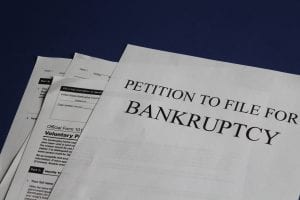Key Points: President Joe Biden signed Covid-19 Bankruptcy Relief Extension Act into law on March 27, 2021. The Act has extended 8 key changes in the bankruptcy laws. Other than the Covid-19 Bankruptcy Relief Extension Act, a few more proposed changes are in the pipeline to protect consumers.
During the second wave of the pandemic, President Biden signed the Covid-19 Bankruptcy Relief Extension Act into law on March 27, 2021. This act was intended to protect financially stressed consumers and business owners. It extends the existing laws of the COVID-19 Bankruptcy Relief Act, which was passed on March 27, 2020.
Covid-19 is not likely to go away from this world anytime soon. The long-term effects of the pandemic can be disastrous for both consumers and business owners. As soon as the federal government understood this, they passed the Consolidated Appropriations Act with a few amendments to bankruptcy laws.
8 key changes in the bankruptcy laws
The previous changes to the bankruptcy laws were expected to expire in March 2021, exactly one year after the Coronavirus Aid, Relief, and Economic Security (CARES) Act was passed. However, before that happened, Congress passed the Covid-19 Bankruptcy Relief Extension Act of 2021.
Here are a few amendments to the bankruptcy law as part of the CARES Act and the CAA.
1. The temporary amendment of the bankruptcy code (section 101(10A)(B)(ii)(V) and CARES Act (Section 1113(b)(1)(A) allows consumers to exclude payments received from the federal government due to the pandemic. This means they don’t have to report these payments as income until March 27, 2022.
2. According to the amended bankruptcy code 1325(b)(2) and CARES Act Section 1113(b)(1)(A), consumers don’t need to include stimulus checks as disposable income in a Chapter 13 bankruptcy plan.
3. New provisions in the Bankruptcy Code Section 1329(d)(1) allow individuals and families to modify their Chapter 13 reorganization plan when they are experiencing financial hardship due to Covid-19. They can request the court to extend the repayment plan for up to 7 years.
4. Debtors who have missed a few mortgage payments due to the pandemic, or opted for forbearance or loan modification in a Chapter 13 bankruptcy, can seek early bankruptcy discharge under Section 1328(i)(1) and CAA Section 1001(b).
5. Individuals who received bankruptcy discharge are eligible for mortgage forbearance. Under section 525(d) and CAA Section 1001(c), they are eligible to get relief under the CARES Act. This includes mortgage forbearance or foreclosure and eviction moratoria.
6. Mortgage servicers can appeal to modify the Chapter 13 bankruptcy plan under section 1329(e) and CAA Section 1001(e) for a CARES Act Supplemental Proof of Claim.
7. Mortgage servicers can file a motion for Supplemental Proof of Claim under Sections 501(f), 502(b)(9), and CAA Section 1001(d). They can appeal to the court for a forborne amount within four months of the expiration of the CARES Act forbearance period.
8. The Coronavirus Aid, Relief, and Economic Security (CARES) Act increased the business debt limit from $2,725,625 to $7.5 million under the Small Business Reorganization Act (SBRA). The new changes help small businesses within a specific debt limit to file Chapter 11 bankruptcy quickly.
These new provisions are all set to expire on March 27, 2022.

What’s next?
Apart from the Covid-19 Bankruptcy Relief Extension Act of 2021, a series of new amendments are likely to be implemented soon. All eyes are on that.
The Consumer Bankruptcy Reform Act of 2020 (CBRA) was proposed on December 9, 2020. The Act proposed a series of changes in the existing bankruptcy laws. If these laws are implemented, then we could notice a change in the number of bankruptcy filings across the US.
Here are a few of the proposed changes:
Consumers can file bankruptcy without completing a credit counseling course.
According to the Bankruptcy Abuse Prevention and Consumer Protection Act of 2005, consumers have to submit a credit counseling certificate to discharge debts in bankruptcy. The proposed law eliminates this requirement.
Consumers with less than $7.5 million debts have to file Chapter 10 bankruptcy.
Forget Chapter 7 and 13 bankruptcy. A new Chapter 10 bankruptcy is all set to replace them. If you have a debt of less than $7.5 million, you have to file Chapter 10. Otherwise, you have to file for Chapter 11 bankruptcy.
In the pre-pandemic era, consumers had to attend creditors’ meetings in person. But the pandemic has changed that. Many consumers attended the meetings remotely. The proposed laws give consumers the option to attend the meeting through video conferencing and conference calls. In addition, the court has to schedule the meetings with the consumers’ work schedules in mind.
Consumers can discharge student loans.
The proposed laws allow consumers to discharge their federal and private student loans as part of unsecured debts through bankruptcy.
Consumers have to pay attorney fees over time.
Several consumers can’t afford to pay fees for legal representation in a Chapter 7 bankruptcy case. Lack of sufficient cash compels them to file Chapter 13 bankruptcy and pay attorney fees over time. Many consumers are unable to complete Chapter 13 bankruptcy cases and discharge their debts. The proposed laws allow consumers to pay attorney fees over time and file for bankruptcy under the right chapter.
The focus will be more on whether consumers can make minimum payments.
Under the current laws, the court can dismiss bankruptcy if they find that consumers are spending money on luxurious expenses. The proposed laws eliminate the unnecessary analysis of how consumers are spending their disposable income.
Consumers can spend their disposable income however they see fit. Based on the valuation of non-exempt properties and their annual revenue, the bankruptcy court can only check whether they can fulfill the minimum payment required.
Consumers may receive an immediate discharge in some cases.
The bankruptcy will determine minimum payment obligation based on consumers’ income and the value of non-exempt assets. Consumers who don’t have enough income and non-exempt assets to make minimum payments will receive immediate discharges. However, some debts will not apply, and liens on the property will survive even after consumers have received a bankruptcy discharge.
Consumers may receive discharges upon plan confirmation.
Consumers can discharge their debts through Chapter 10 bankruptcy under three types of plans:
Residence plan – It addresses the mortgage on the primary residence. Individuals can change amortization schedules, mortgage terms, and loan interests.
Property plan – It addresses secured debts incurred by other properties. Consumers have to propose a repayment plan for both residence and property plans.
General repayment plan – It addresses other unsecured debts.
Will there be a surge in bankruptcy filings due to the temporary and proposed amendments?
Overall bankruptcy filings decreased in 2020 by 30% from 2019 due to pandemic-related federal government relief measures. Although consumer bankruptcy filings were down, business bankruptcy rose by 29% in 2020.
Unless the federal government extends the deadline, it is expected that the number of business bankruptcy filings will increase in 2021. There may be a lot of organizations with debts ranging between $2.75 million and $7.5 million. They are more likely to file for bankruptcy before March 2022 to take advantage of the ‘easy’ bankruptcy option.
Consumer bankruptcy filings may increase if the proposed bankruptcy law changes are imposed to include discharge of student loans. Currently, consumer bankruptcy filings are down, even when people are in financial turmoil. This is because of eviction proceedings, foreclosure, and debt-collection lawsuits.
The federal government has taken drastic steps to preserve jobs and stop foreclosure during the pandemic. Mandatory moratoriums have forced landlords and creditors to avoid taking legal steps against consumers for unpaid debt and rent. Creditors are quiet now, but they have not forgiven debts. When the pandemic is over and the government lifts the restrictions, creditors are more likely to file lawsuits. This is when many consumers may resort to bankruptcy as a protective measure.
What about small businesses? Well, business bankruptcy filings may increase when relief efforts are discontinued. Many businesses are in financial distress. If they are unable to boost revenue and recover their losses, they may have to file bankruptcy to satisfy creditors.


Join the conversation!